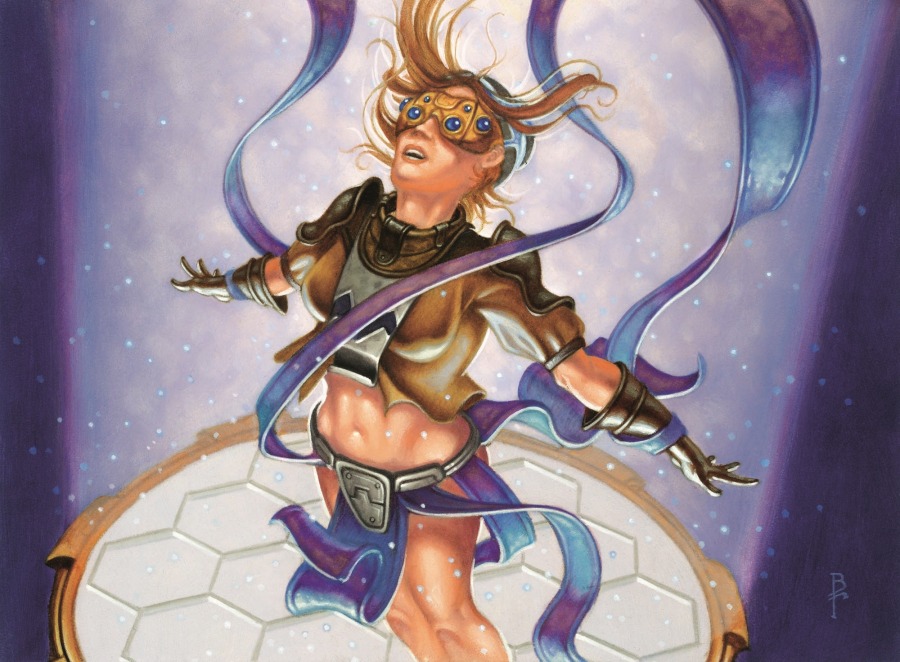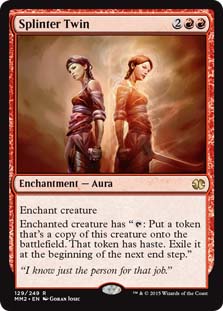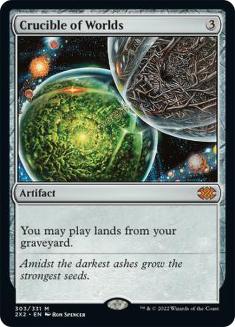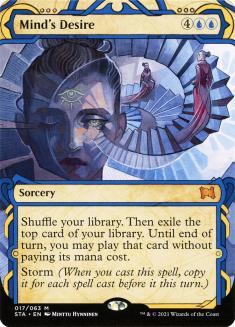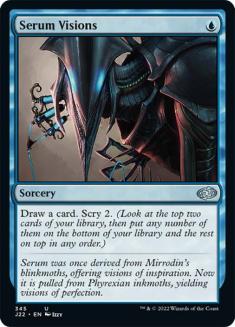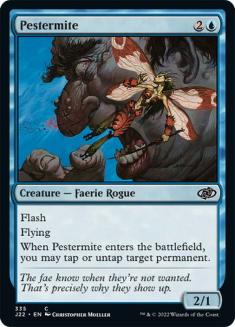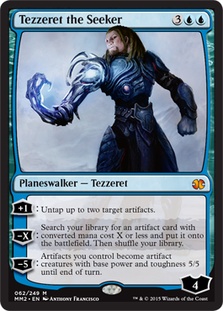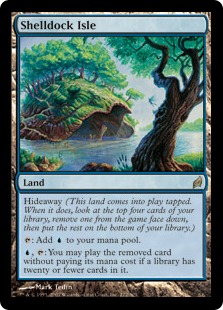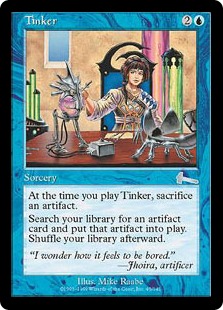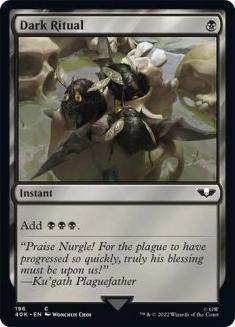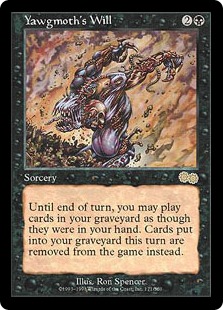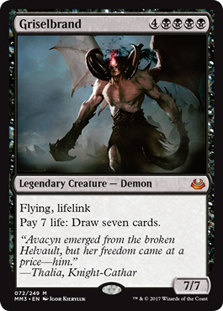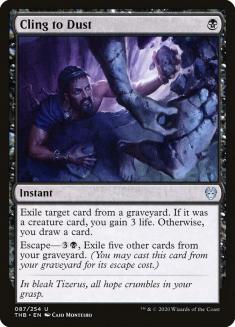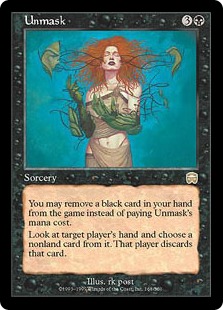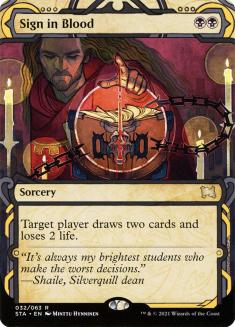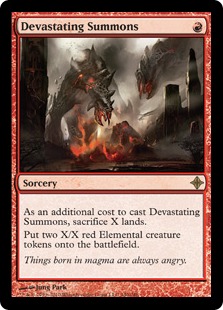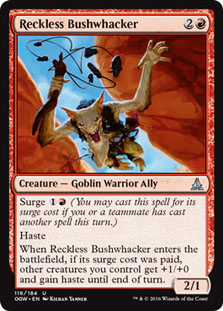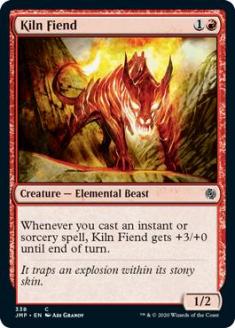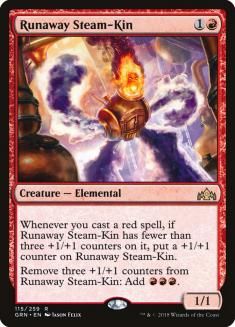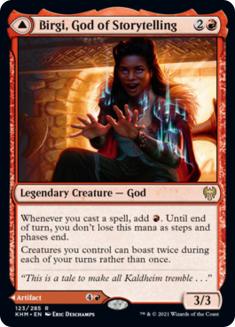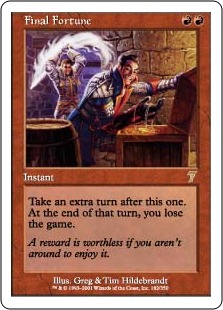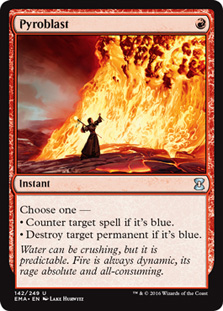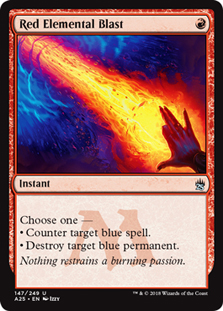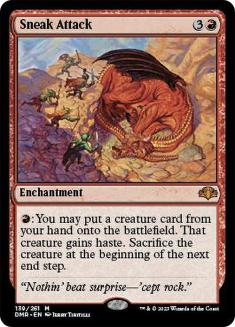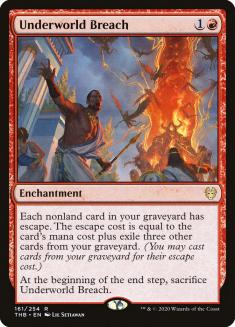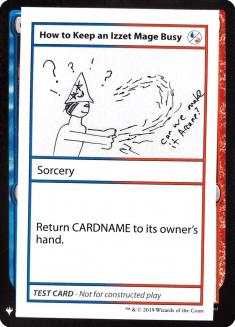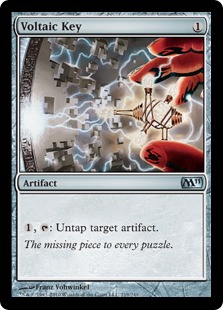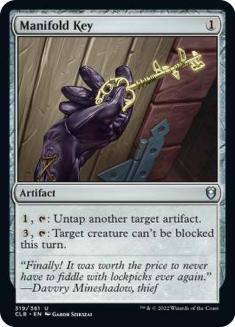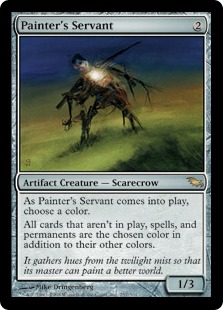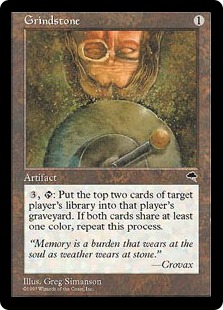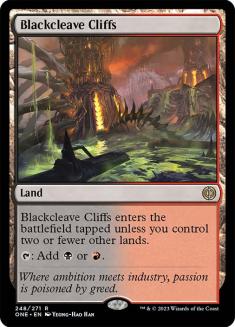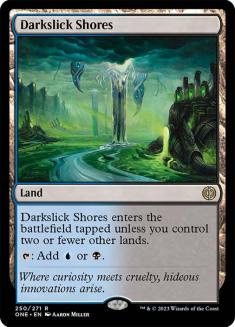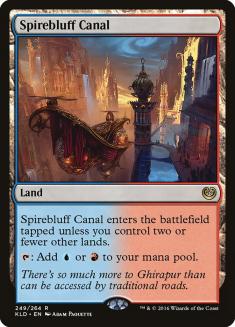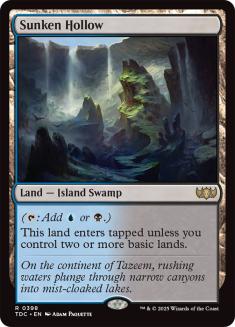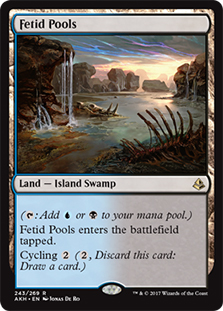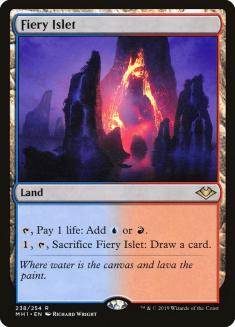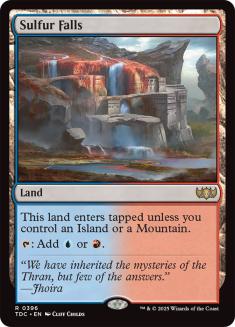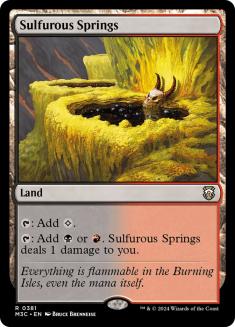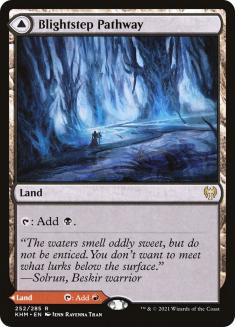Last October, I unveiled my design for a Two-Player Cube and the response has been incredible. I’ve heard from quite a lot of folks that they’ve assembled my list or a version not far off and have loved the experience, and that truly warms my heart. In my inaugural article on 180-card Cubes I mentioned that the design was something of a proof of concept, and today I’m ready to build on that concept.
While I’ve greatly enjoyed the original Twobert (a name that I make no apologies for), it doesn’t encompass every part of Magic that I enjoy. I even have one friend who is more of a Legacy and Vintage player who was a bit sour on the whole experience. No one Cube is going to be for everyone, but all the same, his dissatisfaction motivated me to design something more his speed.
The major missing element, as I understood it, was that there aren’t any combo decks in Twoberts. It would be pretty disruptive to the experience to just work some combos into an environment otherwise curated around attrition on the battlefield, and the entire point of the 180-card design was to design a more coherent two- and four-player Draft experience. Once I determined that the lack of combo decks was the issue, it was just a matter of finding the right inspiration to build a more combo-focused environment.
That came from one of the countless drafts of the Magic Online Vintage Cube I’ve done over the last year. I’m not usually a big Splinter Twin guy, but one draft I happened into a deck that had access to a few different combo avenues. I had some ways to go infinite with Splinter Twin, Crucible of Worlds plus Strip Mine, and a small Storm package. It was one of the more fun decks I’ve ever drafted, with navigating around which combo I was trying to set up being incredibly engaging.
That gave me the idea for a 180-card design that incorporated a lot of different combos with the caveat that the more the combos were capable of coherently existing in the same deck, the better. I’m not the first person to work on a combo Cube, though I’ve taken some issue with the various combo Cubes I’ve seen to this point. The white and green cards tend to look largely expendable to me… which is something you may have heard from me before. I had already been thinking about working on trimming an existing Cube down to 180 cards, and once I had the idea for a combo-oriented Grixis Twobert, I went to work immediately.
General Rules for Trimming a Cube
This was my first go at eliminating 180 cards from a Cube, though I have some previous experience with adding that many. When Grixis Cube got its week on Magic Online, I needed to take the 360-card Cube that I owned and adapt it to a 540-card build for the digital platform. This generally consisted of adding redundant versions of effects that were already in the Cube, adding some lands, and incorporating some additional archetypes that played off the existing ones in the Cube so that they built on the experience rather than merely adding variance. The most radical change was the addition of a token/sacrifice theme and the fact that 540-card Cubes are more midrange by their nature, which is partly a consequence of the redundancies at the higher points on the curve and partly a consequence of a larger card pool almost necessarily resulting in a wider power band.
Conversely, trimming a Cube is a matter of eliminating archetypes and redundancies at the higher points of the mana curve, thereby tightening the power band. Some examples of things that I looked at initially were trimming the total number of payoffs for Reanimator decks, determining the best win conditions for the artifacts-matter strategies, and removing interaction that wasn’t relevant against combo decks. Wildfire is just a worse payoff than Urza, Lord High Artificer, and Reanimator decks don’t need Sheoldred, Whispering One or Inkwell Leviathan when they haver a higher likelihood of getting Griselbrand (I’ll get into more examples of this sort of thing when I break the Cube down by color).
This is the current list for my Grixis Twobert. What I found most interesting in the process of reducing the Cube size was how many cards that weren’t in my 360-card list played better in the 180-card environment. Some of this was just wanting to squeeze more actual combos into the Cube, but this is reflected in other slots as well. There’s much less space for creatures in the smaller, combo-focused build, which opens up space for more cheap card selection and interaction.
My favorite card to think about in terms of the three Cube sizes is Serum Visions. It makes the cut in the 180-card and 540-card builds to add more consistency to decks, but doesn’t make the cut in the 360-card build in the interest of dedicating more slots to adding more archetypes. Cubes where you don’t draft all of the cards in the Cube every draft pressure you to include more cards that players will play in nearly any deck. This can be accomplished either by including cards that are generically powerful or by making most of the cards in the Cube care about the same thing. All of the two-mana creatures in the original Twobert are considerations for any deck that can cast them simply because most of the decks and games are about attacking and blocking.
The Grixis Twobert generates decks and games that look very different from that though. Let’s take a look at what each color is up to, and what went into their design.
Blue
One question floating in my mind when I started working on this Cube was, “What do the Force of Will decks look like?” There was no way I was going to have a combo Cube that didn’t involve heavy disruptive elements to drive back-and-forth gameplay, but I also didn’t want to include a ton of controlling cards and end up in a spot where the control decks just dumpstered the combo decks without playing any cards that required investment on their end.
I had Delver of Secrets in my initial list, thinking that a tempo-style deck could fit in somewhat seamlessly, but ultimately the card couldn’t meaningfully race combo decks that could reliably draft all of their best cards and it offered little of value to the environment. Where I landed was on only including cards that offered disruption or card selection, or were combo pieces themselves. The Force of Will decks are generally the decks that combo with small packages, as opposed to decks like Storm that play little if any permission.
I’ll note here that control decks that don’t feature any combos are draftable and can be competitive in the Cube; they’re just less explicitly supported. There are plenty of counterspells, discard spells, and otherwise interactive cards There are just fewer of the cards that controlling decks use to fully turn the corner like Cryptic Command and Mystic Confluence than you would expect in a more traditional Cube environment. Some of this is desirable to prevent games from feeling like ships passing in the night, and I believe I’ve struck a good balance here in terms of both facilitating combos and offering players avenues to interact.
I don’t feature Splinter Twin in my 360-card build and didn’t include it in my 540 either, but I found that including a handful of small-package combos greatly increased the replay value of this Cube. Once I accepted that Splinter Twin was often going to be the face of the Force of Will decks, I started exploring other degenerate combos to level the playing field. Time Vault combo has proven a much more reasonable fit than I ever would have guessed considering how much disruption players have access to in the average draft, and over time I’ve learned further and further into incorporating more broken cards. The most recent addition that I made to the Cube was Tinker.
Tinker has a reputation for ending games very quickly, though some of that is desirable in a combo-heavy format and the Grixis Twobert has enough interaction to push back against cards like Tinker. I actually ended up adding Tinker and Myr Battlesphere to the Cube after reflecting on which decks were performing better or worse than others and realizing that we were almost never playing Bolas’s Citadel. Storm decks tend to struggle more than the average combo deck, so adding Tinker to increase access to cheap Citadels as well as a castable but powerful threat to supplement Tinker struck me as a good solution. The resulting situation is pretty similar to that episode of The Simpsons where Mr. Burns is sick with everything and is altogether “healthy” because of it.
Blue offers the most flexibility of the colors of the Cube, and also has the lion’s share of the most powerful cards. That said, there’s plenty of reason to draft the other colors.
Black
Black is pretty all-in on Reanimator and Storm, which honestly makes it more powerful here than it tends to be in other high-power environments. Whatever third archetype ends up getting tied to black tends to be much worse than either of these combo setups, so there’s no need to mess around with anything else here. We’ve got tutors, we’ve got discard spells, and we’ve got busted stuff. Aggressive black creatures need not apply.
I’ve experimented with some different removal spells in the Cube, and I do think it’s correct to include a couple of them, but the approach here on that front is very minimalistic. A number of decks in this Cube don’t care about removal and a number of the cheapest removal spells are only good against the weaker decks that this Cube generates. It’s nice to have a Heartless Act for Pestermite or Urza, but something like Fatal Push mostly just punishes Monastery Swiftspear or you for trying to cast it.
There’s very little that’s out of the ordinary here, but I do want to draw attention to the three cards that aren’t in my 360 or 540 that make the cut in the 180.
Cling to Dust and Unmask were two cards inspired by their Constructed success as options for interaction that didn’t involve destroying creatures. Entombing and then Reanimating Griselbrand is one of the most efficient and most broken things you can do in all of Magic, so a little graveyard hate for that and for the Yawgmoth’s Will decks is good to have around. Unmask is more on the other side of things as a tool to enable the broken decks to ensure the coast is clear, but it comes at a real cost and has been pretty fun to play. I’ve actually cast it for four mana several times with the way that the average game ends up playing out, with both players trying to set up a combo turn over the course of several turns with all of the disruption available.
Sign in Blood is the biggest oddball, at least from my perspective. With all of the discard and counterspells I found myself just wanting more stuff that I could always cast as a test spell that put me ahead if it resolved. It’s a little hard to cast, but I just got it in my head that I would love to have Sign in Blood in my hand one game after resolving a Night’s Whisper and it ended up playing great in practice.
Black can hold its own with blue on power level, and the best Reanimator decks are among the best decks that can be drafted in this, or really any, environment.
Red
And that brings us to the most difficult color of the lot. Honestly, everything looks really clean when I look at the list now, but it took the most effort to get red there. I’ve forced Storm enough times to need to attack for lethal with Monastery Swiftspear in my Storm deck, so I had an idea of what I wanted to do when I started working on this Cube. I just didn’t know exactly how to get there.
For starters, Monastery Swiftspear isn’t a good card to put in your Storm deck, so to include it in the Cube you need other reasons to play it. I had some Goblin Guide-type stuff in my initial build, but that was horrible for much the same reason that Delver of Secrets was. You can’t realistically beat a good combo deck with a beatdown deck, and the midrange red creatures would be even worse on that front. So over time I worked on ways to turn the beatdown deck into a good combo deck.
Jamming every good prowess creature; the potential to combo with Runaway Steam-Kin and Birgi, God of Storytelling; and a couple of obscure aggressive combos has pushed red in a very powerful and cool direction. Devastating Summons plus Reckless Bushwhacker is one that I’ve had around in Grixis Cube for years that was inspired by an old Standard deck and gets the job done well enough in this environment. The big find was Final Fortune. It’s not uncommon for prowess-style decks to be a full turn behind higher-powered combos, and Final Fortune gives them the option to take that turn. Final Fortune can also show up alongside Tezzeret the Seeker to win out of nowhere, and I love what it adds to this Cube while being a generally undesirable Cube card otherwise.
The other significant cards that red brings to the table come in the form of hate cards against the blue decks. I had a Blue Elemental Blast in the Cube briefly, but it just felt off as compared to the other counterspells, and red having hate cards against blue made way more sense with regard to the colors’ relative power levels. The Blasts offer meaningful disruption as a draw to red and help to balance the Cube with regard to a handful of its most powerful cards.
Beyond that, you see a handful of the most historically powerful cards in any Cube that need no introduction.
Realistically, red offers less to the Cube than blue and black, but much of what red does resonates more strongly with me and I see a lot of value in what it brings to the table.
Gold Cards
The gold cards in this Cube are mostly role-players, which is a significant departure from how I typically approach gold cards in Cube. I like to use multicolor stuff as a draw to go out of your way to play certain color pairs, but there just isn’t much in the way of great gold cards for combo decks. As such, you see a little disruption and card selection here.
Rakdos doesn’t offer much at all for combo decks, but I’m happy to give Rakdos Charm some love, and Sire of Insanity showing up as a castable card that’s great to Reanimate is welcome as well.
The weirdest card in the Cube is hands down How to Keep an Izzet Mage Busy — a wonky design found in Mystery Boosters that isn’t legal in any Constructed format. It’s a fine enough card for Storm decks, and it can actually build infinite Storm and/or prowess triggers in conjunction with Runaway Steam-Kin or Birgi. I’m pretty big on those combos, and the card also gets the nod from me for being solid enough in a Kiln Fiend deck otherwise.
Artifacts
I’ve already discussed Time Vault a little bit earlier, though it’s likely the card that deserves the most scrutiny in this section. We’ve had a lot of difficulty in our drafts actually getting Time Vault and a way to untap it, much less drawing both in the same game. That might sound like a reason to omit the card entirely, though there’s a little more going on here.
The bigger picture is that there are many ways to make Voltaic Key useful in this Cube. It combines well with Candelabra of Tawnos and Tolarian Academy. It can net you extra cards with Sensei’s Divining Top or extra mana with Grim Monolith. My personal favorite use for the card is untapping Wishclaw Talisman so that I can tutor twice immediately. I find that making both Time Vault and the untappers desirable in conjunction or separately in different ways results in them adding a lot of cool things to the Cube. I’d likely cut Abrade from the Cube if not for Time Vault, but having it and ways to interact with the combos in every color has made it not feel problematic.
I fit another artifact combo that wins the game in here, too. We’ve only had this combo come up once, and admittedly it adds way fewer cool interactions than the Time Vault combos, but I see having this combo in the Cube as value added for both the Pyroblasts and the Goblin Welders. I had Thopter Foundry and Sword of the Meek in for a while in the interest of including more total combos, but the fact that neither card offered much of anything and they didn’t even automatically win when you assembled both made them unexciting to see during the draft.
My initial list had fewer total artifacts, but over time it became clear that Signets and Talismans were very useful inclusions in terms of cards that players would always be able to play. That sort of thing became more important as more specific combos made their way into the Cube over time.
Lands
Fetches, duals, and shocklands are givens in a format as high-powered as this one, but I wanted a little more fixing, both to make the decks more consistent and so that Wasteland would be live in more games with Crucible of Worlds. That’s kind of a messed-up thing to do, but enjoying Wastelanding people isn’t a crime.
From there, fastlands are going to be the most powerful option for Cubes with such low mana curves. They were easy enough to include, but I still wanted more fixing. I really liked the idea of including more lands that worked with both High Tide and Bubbling Muck, and I wanted to balance the other color pairs with appropriate lands as well.
Sulfur Falls and Fiery Islet are both slam dunks for Izzet, but Rakdos options were a bit tougher. I landed on wanting lands that entered the battlefield on Turn 1. Sulfurous Springs and Blightstep Pathway aren’t pretty, but they fit Rakdos’s needs.
What’s Next for Twoberts?
I’ve been having a blast playing the Grixis Twobert, and this experience has reinforced my belief that I’ve only begun to scratch the surface on what can be done with 180 cards. I have a completely different design on-deck that I’m waiting to test and a couple others kicking around in my brain. I’ve also heard some really cool ideas from friends, like a Jund Twobert comprised of cards that would be good in Aggro Loam decks.
The size of the Cubes is small, but the possibilities are endless.

